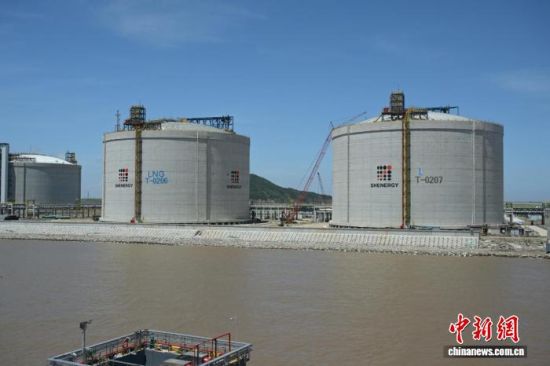Under the supervision of Xuhui Customs, the final batch of main equipment for the Shanghai LNG (Liquefied Natural Gas) terminal expansion project (Phase 1) — the high-pressure pump cabinets — completed customs clearance. This marks the successful import of all major equipment for Phase 1, laying a solid foundation for the project’s completion and operation.
The Shanghai LNG terminal expansion project is both a national key oil and gas project and a major energy initiative under the Shanghai and Zhejiang “14th Five-Year Plan.” As the primary natural gas supply source for the city, the Shanghai LNG project accounts for 50% of the local market’s annual supply and plays a crucial role in ensuring stable supply and emergency peak-shaving. In recent years, it has also supported emerging services such as LNG bunkering for international vessels and new ship testing, helping Shanghai Port become the world’s third-largest and China’s top LNG bunkering hub.
This year, Phase 1 of the expansion project has achieved key milestones, including the successful completion of hydrostatic tests for four storage tanks, the relocation of the joint control center, and the handover inspection of the dock construction. By the end of August, tank acceptance checks and pressure tests for process pipelines will be completed, with full operation expected by year-end.
Xuhui Customs has tailored its supervision measures to ensure the smooth and efficient clearance of imported equipment for the project. The customs team closely coordinated with construction progress and import needs, implementing streamlined procedures while ensuring equipment safety and quality to accelerate the project.
Upon completion of Phase 1, the expanded terminal will supply 2.1 million cubic meters of gas per hour to the Yangtze River Delta region, significantly enhancing regional gas storage, supply, and emergency response capabilities. Once fully completed, the Yangshan Port terminal will have an annual receiving capacity exceeding 12 million tons and a storage capacity of nearly 1.8 million cubic meters, further supporting Shanghai’s economic growth and energy transition.
Shanghai LNG terminal
The Shanghai LNG (Liquefied Natural Gas) terminal, located on Yangshan Deep-Water Port, is a key energy infrastructure project that began operations in 2009. It was developed to meet Shanghai’s growing natural gas demand, receiving and regasifying LNG imports primarily from countries like Australia and Malaysia. The terminal plays a vital role in China’s energy security and supports the city’s shift toward cleaner energy sources.
Xuhui Customs
Xuhui Customs refers to the historical customs house in the Xuhui District of Shanghai, which played a significant role in trade and maritime regulation during the late Qing Dynasty and early 20th century. Established as part of China’s modern customs system under foreign influence, it oversaw taxation and imports in the bustling port of Shanghai. Today, the area reflects Shanghai’s colonial past and its development into a global trade hub.
Yangtze River Delta
The Yangtze River Delta is a prosperous and economically vital region in eastern China, encompassing major cities like Shanghai, Nanjing, and Hangzhou. Historically, it has been a hub of trade, culture, and innovation since ancient times, with its fertile lands and waterways supporting agriculture and commerce. Today, it is one of the world’s most dynamic economic zones, driving China’s modernization and global connectivity.
Yangshan Port terminal
Yangshan Port is a deep-water container port in Shanghai, China, and one of the world’s busiest ports. Built on Yangshan Island, connected to the mainland by the Donghai Bridge, it was developed to overcome depth limitations at Shanghai’s original port. Opened in phases starting in 2005, it plays a crucial role in China’s global trade, handling massive cargo volumes due to its advanced facilities and strategic location.
Shanghai Port
The Shanghai Port, one of the world’s busiest and most important ports, has been a key hub of trade and commerce since its origins in the Tang and Song dynasties. It grew significantly during the 19th century as a treaty port under foreign influence and is now a modern global shipping center, playing a vital role in China’s economy. Today, it includes the Yangshan Deep-Water Port, a major engineering feat that enhances its capacity and efficiency.



